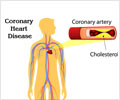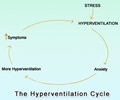Specialized, coordinated emergency networks dramatically reduce time-to-treatment for patients with ST-elevation myocardial infarction (STEMI)—the most dangerous type of heart attack— according to a new study published in the April 2009 issue of the Journal of the American College of Cardiology: Cardiovascular Interventions.
STEMI involves the sudden blockage of one of the three big coronary arteries that supply blood to the heart. Rapid intervention with primary percutaneous coronary intervention (PCI) by specialists performing balloon angioplasty and stenting restores blood flow, saves heart muscle, and reduces the likelihood of death. Although primary PCI in the cardiac cath lab is the best treatment for a STEMI heart attack, it is a highly complex, multi-disciplinary and time-sensitive intervention that is only available in one out of five U.S. hospitals."This study shows that organized STEMI networks consistently provide the fastest treatment of acute heart attacks," said Ivan Rokos, M.D., an emergency physician in Los Angeles and lead researcher on the study. "For decades, paramedics, emergency departments and cardiology teams have co-existed, but we have only recently recognized how important it is to coordinate all three into one seamless unit that that delivers rapid primary PCI and restores blood flow in a blocked coronary."
Researchers performed a pooled analysis of 10 pioneering STEMI heart attack networks involving 72 hospitals in Oregon, California, Minnesota, Michigan, North Carolina and Georgia. Each program independently implemented common approaches including: universal access to 911; pre-hospital diagnosis of STEMI heart attacks by paramedics using special electrocardiograms (ECGs); early activation of the cath lab team at the nearest designated STEMI hospital; and rapid transport via ambulance (with planned bypass of hospitals without specialized cath lab capability).
"Whether it was big cities like Los Angeles or smaller towns like Medford, Oregon, the creation of these networks was feasible," said Dr. Rokos. "Common to each region was a spirit of multi-disciplinary collaboration, often initiated by a small group of visionary healthcare providers, who saw new opportunities to improve STEMI heart attack care in their communities."
To determine the efficacy of these networks in providing timely treatment, researchers tracked door-to-balloon (D2B) time. D2B is the time it takes for the patient to receive definitive treatment, from the "door" of the emergency department to the first cath lab "balloon inflation" that opens the blocked artery. The national quality standard is a D2B time of 90 minutes or less; each 15 minute delay beyond these 90 minutes is associated with an increased risk of death.
Researchers found that 86 percent of patients with STEMI heart attack who called 911 and were treated within a coordinated regional network received skilled coronary intervention within 90 minutes, which surpassed the American College of Cardiology D2B Alliance target (a >75 percent rate of D2B ≤ 90 min). This is a marked improvement compared to registry data from 1999 to 2002 that showed less than half (40 percent) of patients were treated within 90 minutes.
Advertisement
"People need to dial 911 if they're having chest pain or other signs of a heart attack," said Dr. Rokos, explaining that half of patients elect to drive to the emergency department and risk major delays in treatment. "As this study shows, paramedics can diagnose STEMI heart attacks quickly and can trigger the activation of an entire system, which allows patients to enter a virtual express-lane to the cath lab team at the nearest STEMI-hospital."
Advertisement
Dr. Rokos adds that ambulance transport of STEMI patients is critically important in an era of hospital over-crowding, which has gridlocked many of our nation's emergency departments.
"The most important lesson of this study is that reperfusion with primary PCI can be provided more rapidly if EMS is placed in its rightful position as the front line for integrated STEMI care. Coordinated efforts between paramedics and hospitals equipped to perform PCI can dramatically improve the care of patients with heart attacks," said Christopher Granger, M.D., cardiologist, Duke University Medical Center, and author of the accompanying editorial. "Still, we must find ways to improve inter-hospital transfer for patients presenting at hospitals without cath labs."
Dr. Rokos said further study is needed using more sophisticated data collection by existing national quality improvement registries, such as the ACTION Registry ® – GWTG ™. Also, the study findings suggest that inappropriate cath lab activations can occur based on paramedic analysis of pre-hospital ECGs, though the exact frequency could not be determined. The potential to maximize system efficiency with wireless transmission of the pre-hospital ECG to the receiving hospital is under study.
Dr. Rokos reports no conflict of interest.
Source-Eurekalert
SRM















